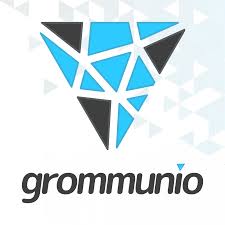Grommunio — Open-Source Alternative to Microsoft Exchange
General Information
Grommunio is a relatively new name in the mail and collaboration space, but it has been getting attention fast. It’s positioned as a drop-in replacement for Microsoft Exchange and Outlook 365, but built on Linux and open-source components. The idea is simple: give enterprises email, calendars, contacts, tasks, chat, video meetings, and file sharing — all integrated, but without locking into Microsoft’s cloud.
A lot of admins discovered Grommunio when looking for a way out of high Office 365 licensing bi…
How It Works
Grommunio runs on a Linux server and bundles several services into a single stack: Postfix/Dovecot for mail, groupware modules for calendar and contacts, and extras like chat, video conferencing, and file sync. For end users, Outlook and mobile clients connect via ActiveSync just like they would with Exchange.
The system includes a responsive webmail that mimics the Outlook Web App look. Admins manage everything through a central web console — domains, users, quotas, updates. Multi-tenant mode …
Functions
Feature | What it looks like in practice
—|—
Mail stack | SMTP/IMAP/POP3 backend with Outlook/ActiveSync support
Groupware | Shared calendars, contacts, tasks, notes
Web interface | Modern HTML5 webmail, Outlook-like layout
Collaboration | Built-in chat, video conferencing, file sync
Directory support | LDAP/AD integration for centralized authentication
Security | TLS/SSL, DKIM/SPF/DMARC, antivirus/antispam filters
Multi-tenant | Host multiple domains with separation and branding
Admin console | Web-based central management, monitoring, updates
Licensing | Open source core; enterprise support plans available
Installation Guide
1. Prepare a Linux host (SLES, openSUSE, or Debian/Ubuntu).
2. Add the Grommunio repository and install via package manager.
3. Run the setup tool to configure hostname, mail domain, and admin account.
4. Integrate with LDAP/AD if required.
5. Point DNS (MX, SPF, DKIM, DMARC) to the server.
6. Test with Outlook and mobile clients via ActiveSync.
For larger rollouts, admins often pair it with a load balancer and database replication.
Everyday Use
– Enterprises deploy it as a lower-cost Exchange alternative while keeping Outlook compatibility.
– Service providers host it in multi-tenant mode to offer branded mail and collaboration.
– Public sector uses it for sovereignty reasons — keeping data on national infrastructure.
– IT teams like that they can add chat and video modules without relying on Microsoft Teams.
For users, the difference is barely noticeable: Outlook, phones, and browsers just work as before. For admins, it means updates through Linux repos instead of Microsoft licensing dashboards.
Limitations
Being younger than Zimbra or Exchange, Grommunio’s ecosystem is still smaller. Documentation and community are growing but not as mature. Upgrades can feel rough compared to polished SaaS platforms. Some integrations with third-party SaaS tools are missing. Still, for organizations that value control and cost savings, these are acceptable trade-offs.
Comparison
Tool | Platforms | Strengths | Best Fit
—|—|—|—
Grommunio | Linux | Exchange-like, Outlook/ActiveSync support | Enterprises, providers, public IT
Zimbra OSE | Multi-platform | Mature open-source groupware | Schools, SMBs, mixed deployments
Microsoft Exchange | Windows / M365 | Full ecosystem, deep integrations | Corporates standardized on MS
Kopano/Zarafa | Linux | Groupware with Outlook support (older) | Niche deployments, legacy users
Nextcloud | Linux | Strong file sharing + collab apps | Teams focused on document work
Notes from the Field
Admins who tried Grommunio often mention that migration from Exchange feels surprisingly smooth, since Outlook clients connect the same way. A common tip is to test ActiveSync load carefully, as mobile sync tends to be the busiest part of the system. Some teams run it side by side with Nextcloud for a more complete collaboration suite.

